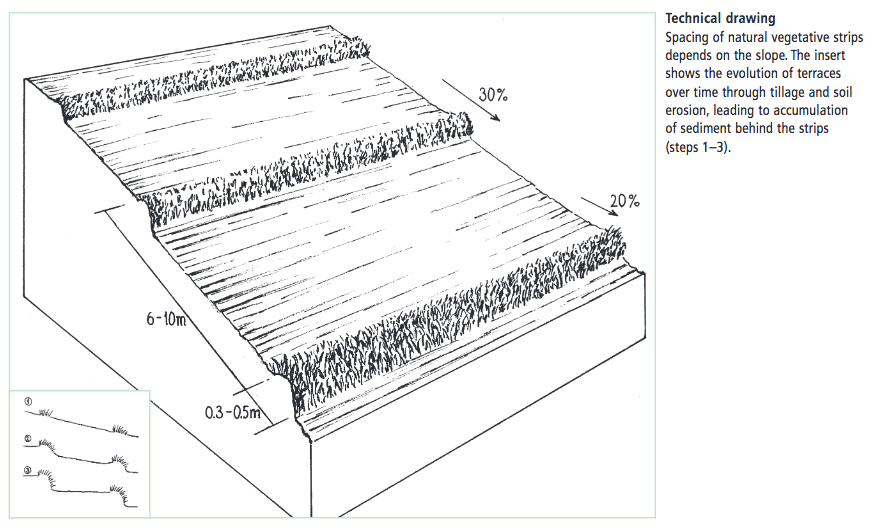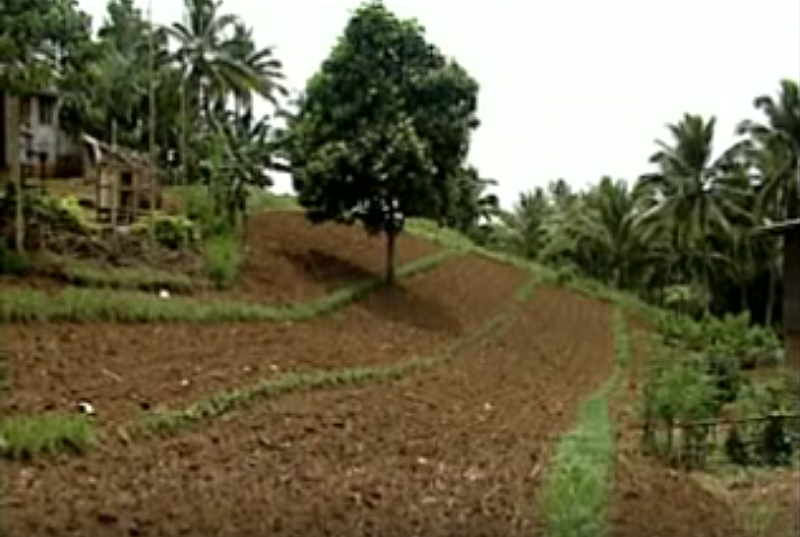I came across a fascinating video on “natural vegetative strips” yesterday.
Check this out:
“Natural vegetative strips (NVS) are narrow live barriers comprising naturally occurring grasses and herbs. Contour lines are laid out with an A-frame or through the ‘cow’s back method’ (a cow is used to walk across the slope: it tends to follow the contour and this is confirmed when its back is seen to be level). The contours are then pegged to serve as an initial guide to ploughing. The 0.3–0.5 m wide strips are left unploughed to allow vegetation to establish. Runoff flowing down the slope during intense rain is slowed, and infiltrates when it reaches the vegetativestrips. Eroded soil collects on and above the strips and natural terraces form overtime. This levelling is assisted by ploughing along the contour between the NVS – through ‘tillage erosion’ – which also moves soil downslope.
The vegetation on the established NVS needs to be cut back to a height of 5–10 cm: once before planting a crop, and once or twice during the cropping period. The cut material can be incorporated during land preparation, applied to the cropping area as mulch, or used as fodder. This depends on whether the farmer has livestock or not, on personal preference, and on the time of cutting. If the grass is applied as mulch or incorporated, the technology can be considered to be an agronomic, as well as a vegetative, measure.
NVS constitutes a low-cost technique because no planting material is required and only minimal labour is necessary for establishment and maintenance. Some farmers had already practiced the technology for several years before the intervention of the ICRAF (The World Agroforestry Centre) in 1993. ICRAF came to realise that farmers here preferred NVS to the recommended ‘contour barrier hedgerows’ of multipurpose trees – which land users viewed as being too labour intensive.”
How is the Practice of Natural Vegetative Strips Different?
Imagine hedgerows or alley cropping, then make it simpler.
All the farmer does is find the contour of their slope, then let the native vegetation grow. It’s rather like Inga Alley Cropping, but with grass and weeds instead.
According to FAO, over time, those strips eventually create terraces instead of a steep slope. This illustration from the .pdf shows how:

I never thought much about swales, runoff and hedges on contour back in Florida. Here in the tropical mountains, things are a lot different and I’m learning all over again.
I can see how this natural vegetative strips idea would work well here by stopping erosion, providing a place for beneficial insects and lessening the slope of the land over time.
I’m filing it for the future.

